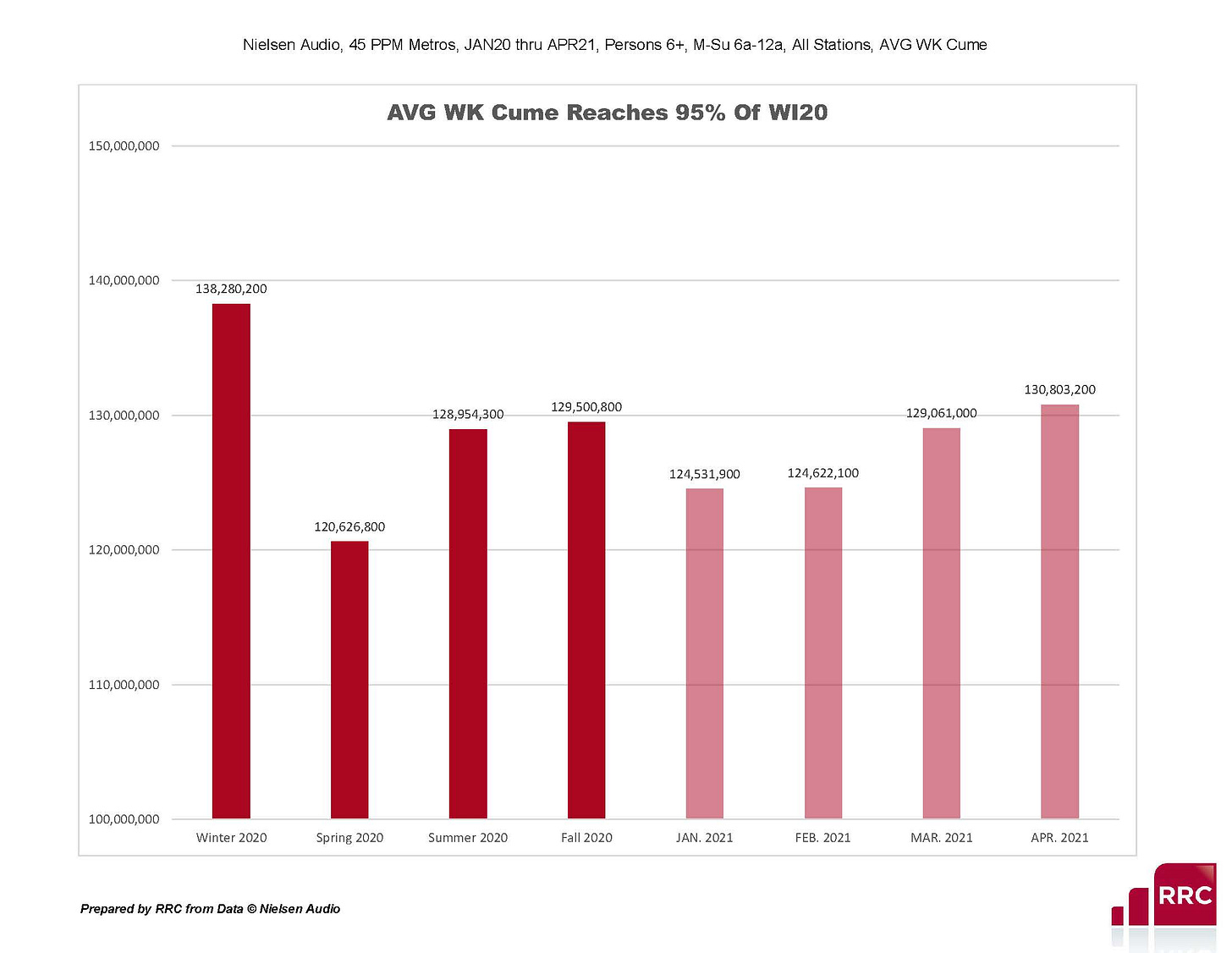Welcome to the June 4th edition of the Three Things newsletter for public media leaders from the Public Impact Group. Here's what's up this week:
The Case for Increased Federal Funding of Local News and Public Media
The view from 10,000 feet on AI and Journalism
WFH translates to LFH
THING ONE: The Growing Movement for a Federal Investment in Local News and a Larger Investment in Public Media
There has been a flurry of activity taking place over the last week around an increased federal investment in public media and in federal support to address the crisis in local news. The timing was concurrent with The White House's release on Friday of its proposed federal budget for the 2022 fiscal year that begins on October 1st.
The Biden Administration budget proposes level funding for CPB at $475 million1 in FY 2024 for CPB's advance appropriation, $20 million for the public broadcasting interconnection system, and $29.5 million for the Department of Education's Ready to Learn program in FY 2022. This proposal is significantly less than the $565 million that the industry is seeking and has the support from 149 members of Congress of both parties.
In support of this increased investment, Victor Pickard2 and Timothy Neff3 authored a powerful opinion piece in the Columbia Journalism Review that addresses how important public media is to rebuilding local journalism.
US public media need the funding and the mandate to focus especially on the growing local news deserts across the country. Media subsidies date back to the early US postal system—they are as American as apple pie—but we need to repurpose them to today's infrastructural needs. Well-established research on media systems and their democracies — as well as the historical and international record — suggests that such subsidies won't usher in totalitarian regimes; quite the contrary.
The piece discussed the role that public radio and television can play to help strengthen our democratic institutions, noting how underfunded public media in the U.S. is compared to other nations.
This piece makes a compelling case noting that "Public funding ultimately establishes media as a public good. A media system founded on a non-commercial logic doesn't privilege those who can pay or whom advertisers wish to reach."
Also, last week, the Rebuild Local News coalition issued a statement requesting that Congress include support for America's community newsroom in the infrastructure bill now being negotiated between The White House and some Senate Republicans.
"We are aware that government assistance to the news media can be inappropriate or even harmful if done the wrong way. But the crisis in local news has become so severe we believe urgent action is necessary -- and can, indeed, be done in a content-neutral, nonpartisan way, minimizing the risk of government favoritism or interference."
Steve Waldman, president of Report for America, supported this idea in an excellent piece on the Poynter website.
Local news is, in fact, the civic infrastructure of democracy.
But let's get less metaphorical. If the health of democracy wasn't reason enough, there's another, practical reason why help for local news should be part of the infrastructure bill. If the government is going to spend a trillion or so dollars on public works projects, we need local watchdog reporters to make sure the money is spent well.
Unfortunately, the only public media entity adding its name to the Rebuild Local News statement is the National Federation of Community Broadcasters. NPR, APTS, PRPD, PMJA, and Greater Public are absent as signatories to this statement.
As I've noted previously, perhaps these organizations are conflicted because of other priorities, such as the Congressional request for $300 million to support public media infrastructure.
That may be understandable. However, for the last dozen years, we’ve been working to increase the awareness with national and local funders of the role that public media can play in solving the crisis in local news. Not joining these other nonprofit and for-profit news associations is a step backward when the momentum has been moving in the right direction. Further, many of the Rebuild Local News plan proposals are designed to help public media specifically.
Public media's national organizations should consider being a part of the Rebuild Local News coalition because it is crucial to solving the crisis in local journalism across the country.
THING TWO: A Starter Guide to AI and Journalism
Back in April, WHYY in Philadelphia partnered with Princeton University on a new podcast focusing on how artificial intelligence affects our lives and how things like machine learning, automation, and predictive analysis will affect our future.
A.I. Nation is interesting because it helps us understand the possibilities and potential harm, including the inherited biases that AI can play if progress moves forward unchecked.
First, I love partnerships like this that bring together public media with institutions (like Princeton) that can bring expertise that may not exist in our organizations to create content that can stand out in the crowded space of podcasting. Second, the series pushed me to explore a little more about how artificial intelligence can help news organizations produce meaningful content more efficiently with limited resources and high demand from audiences for more information.
The Google News Initiative (GNI) has been instrumental in funding some of these efforts, including Michigan Radio’s Minutes podcast project that provides expanded access to public meetings from more than 40 cities in Michigan. The project also allows the Michigan Radio newsroom to stay on top of the happenings at these meetings through speech-to-text transcription technology.
Another GNI funded project is Crosstown, a non-profit news organization covering Los Angeles neighborhoods differently through data. Crosstown is a collaboration between the USC Annenberg School of Communication and Journalism in partnership with the Integrated Media Systems Center at the Viterbi School of Engineering. The team also includes faculty and researchers from the Spatial Sciences. This case study and slide deck provide a good overview of how this type of effort could not have been possible without AI.
Many newsrooms are doing some work utilizing AI, perhaps without even knowing it. However, here’s an excellent guide to creating an AI strategy for your newsroom courtesy of the JournalismAI project from the London School of Economics’ media think-tank Polis.
1. Define Your Goal and how AI can help you achieve that objective.
2. Gather an interdisciplinary team. For smaller organizations, this may require some creative thinking, perhaps collaborating with Universities or others who can bring a level of expertise to help sort through the many ideas that may begin to flow from your conversations.
3. Avoid being too grand in your visions and expectations. This is where discipline is vital in your planning effort. One suggestion is to focus on small experiments that can add value for audiences that can eventually be scaled up if successful or easily abandoned without investing too many resources and time in unrealistic projects.
It’s also important to remember the need for the human element to stay connected to an AI project because we know that computers, just like humans, can be biased. Gabriel Kahn, who is part of the Crosstown collaborative and also a journalism professor at USC Annenberg School for Journalism, notes:
"Be as critical and discerning as possible" when looking at data and the way computers process them, advised Khan. "Repeatedly put in explanations of who the data was gathered from, invite the audience to ask questions about the data and demystify that process. Also openly say what the limitations of the data is."
In addition to checking out the JournalismAI project, check to see if a Hack/Hackers chapter is in your community. They are an international grassroots community that connects journalists and techies so they can learn from each other.
THING THREE: WFH translates to LFH (Listening From Home)
It goes without saying that media consumption has changed dramatically over the past 15 months as lifestyle changes have brought an increase in people streaming video at home and a significant drop in audio listening in cars.
The Share of Ear study from Edison Research has been tracking the trends of audio listening for the last several years, and last week provided some trends for the first quarter of 2021.
The big news is that, among employed persons who work from home, nearly three-quarters of their total audio consumption (72%) happens at home. Meanwhile, only 29% of their listening occurs at home among those who work away from their homes.
Kurt Hansen’s RAIN News noted that the study also found profound shifts in what people listened to and how they listened. For example, the time spent listening to podcasts increased by 26% YoY in Q1 of 20214. That pushed the share of listening to podcasts to 5.4% of total ear share, up from 4.3% previously.
Smart speaker use for audio listening also rose by more than 40%.
Since many people are still working at home, there’s still a significant amount of listening happening at home. Still, it’s nothing close to the 70% share of at-home listening according to the Share of Ear study from a year ago, in the early months of the pandemic.
In more positive news for radio, the RRC reported that average weekly Cume listening in April 2021 was 95%5 of where it was for WI20 (pre-COVID). The big question in the future, though, will be whether Time Spent Listening returns to anywhere close to pre-COVID levels in the months ahead.
Stations need to continue to adjust their thinking to this new normal, pushing listeners to the station’s stream (particularly to Smart Speaker listening) when they’re at home is so important to remember since fewer listeners, particularly those under 40, have radios at home.
I highly recommend watching and sharing the PRPD session on Making the Most of On-air Promotion from its Spring Training series. This webinar is an excellent reminder about the need for focus and discipline in a station’s on-air sound so that you’re making the most of the time you have to talk to your audience.
Worth noting that this is the first time in five years that The White House has not proposed eliminating funding for CPB.
Victor Pickard is a Professor of Media Policy and Political Economy at the University of Pennsylvania’s Annenberg School for Communication, where he co-directs the Media, Inequality & Change Center. He is the author of Democracy Without Journalism.
Timothy Neff is a postdoctoral research fellow at Annenberg’s Media, Inequality and Change Center. His research focusing on media systems and climate change is published in The International Journal of Press/Politics, International Journal of Communication, and Environmental Communication.
This is time spent listening to podcasts, not downloads or audience size.
Nielsen Audio, 45 PPM Metros, JAN20 thru APR21, Persons 6+, M-Su 6a-12a, All Stations, PUMM — prepared by the RRC






